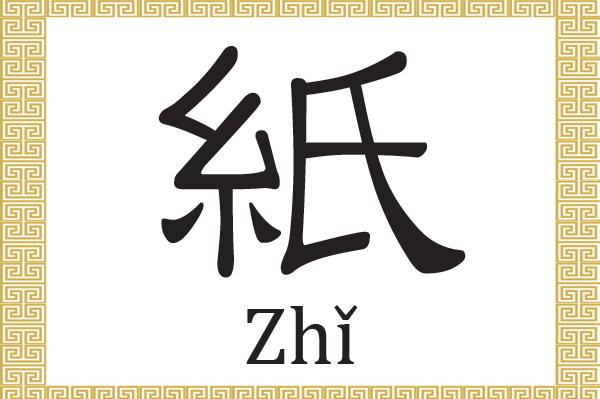The composition of the character 紙 (zhǐ), which means paper, follows the development of “paper” in ancient China.
About 2,000 years ago, before Cai Lun improved the paper-making technique and significantly lowered the cost for producing paper, people wrote on sheets of silk and other materials like bamboo.
The left side of the character is (sī), the silk radical, which indicates the category and one of the materials that was originally used in China to write on.
Cai Lun used cloth rags, hemp, fish net, and tree bark as raw materials to make a grade of paper that is close to the paper we use today.
The mix of inexpensive raw materials he used to make paper is also represented in the composition of the character by the right side 氏 (zhī), which means low quality, or low level. The right side of the character also indicates the pronunciation.
The character 紙 is used as a noun. It is combined with other characters to form words that have an association with paper, such as 紙幣 (zhǐ bì), paper currency, and 白紙 (bái zhǐ), blank or white paper.
It is also used in idiomatic phrases such as “一紙空文” (yī zhǐ kōng wén), meaning a policy or law that only exists on paper (not implemented at all) and “洛陽紙貴” (Luò yáng -zhǐ guì), which suggests the popularity of a new book.





